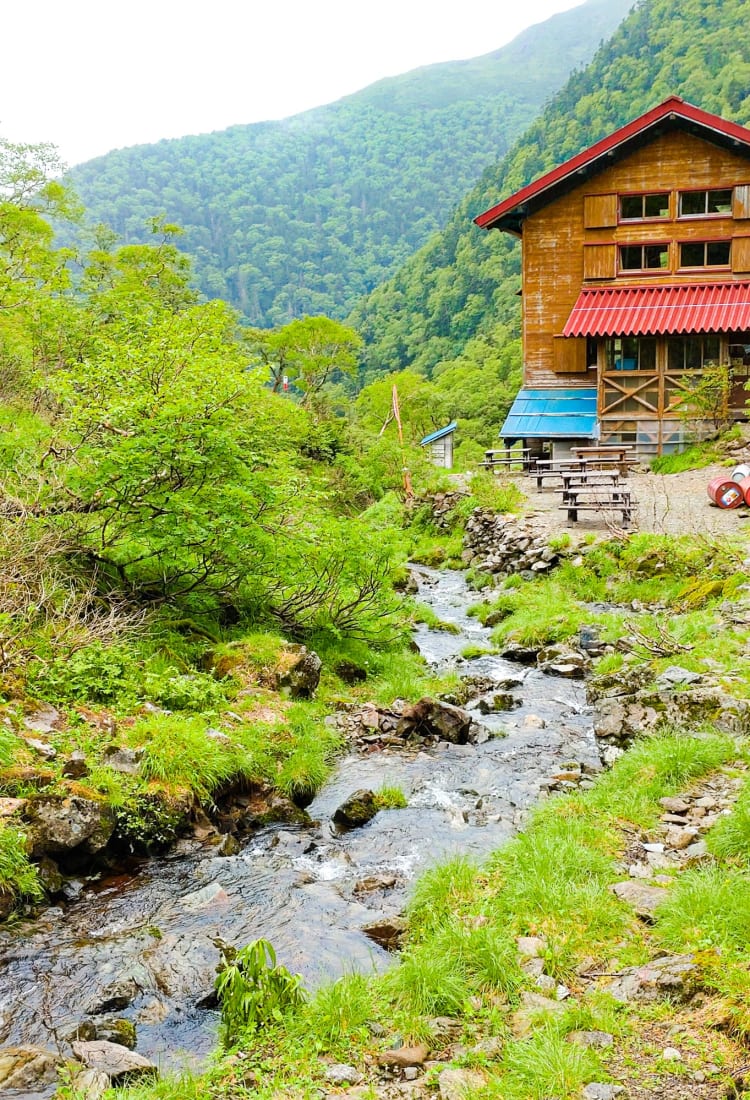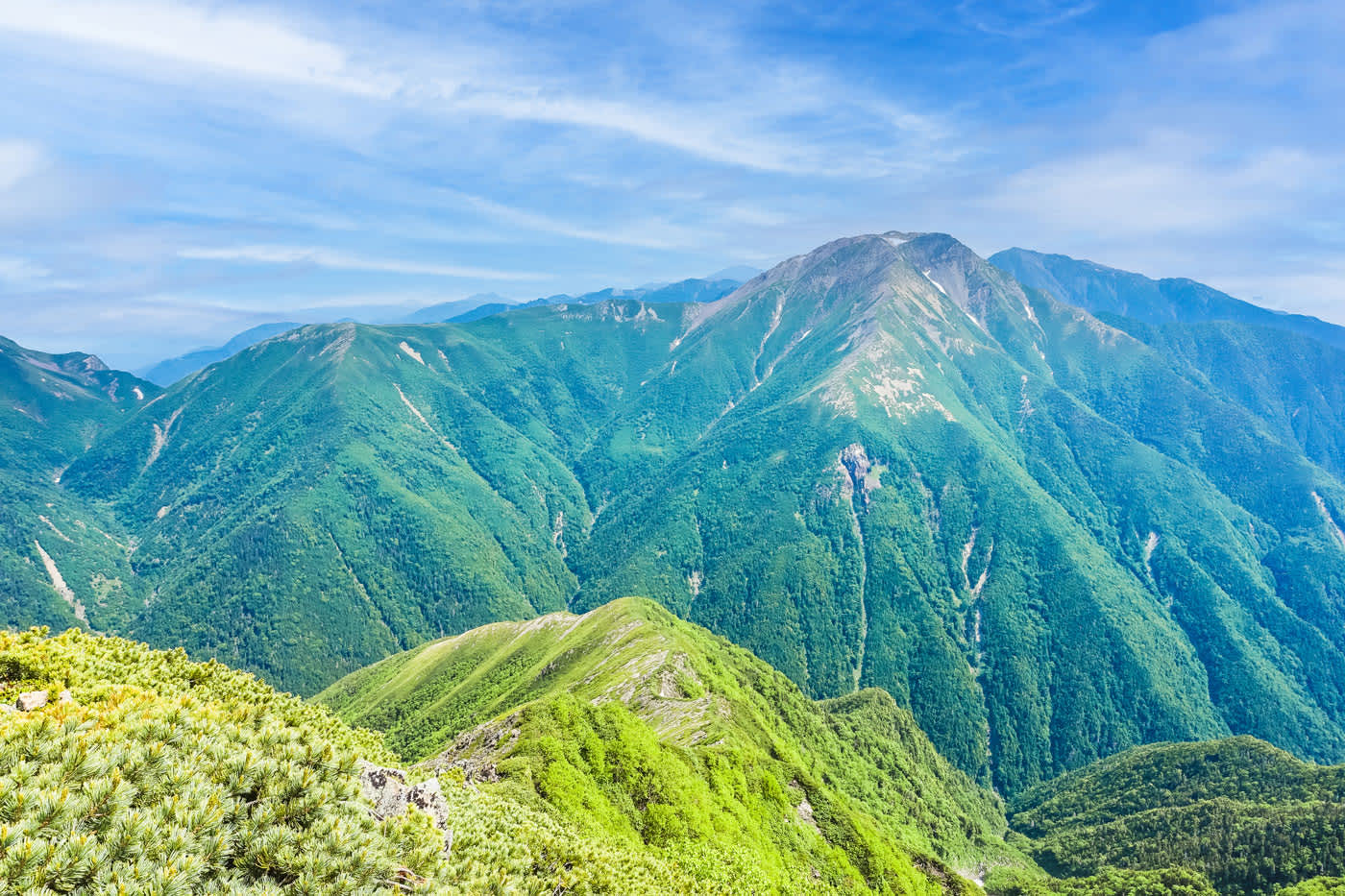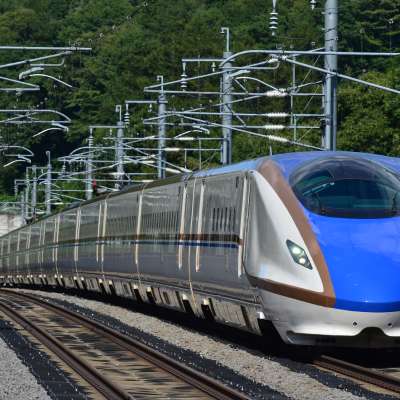
2024.07 Hut Life: Everything You Need to Know About Mountain Huts in Japan
Hut basics: An introduction to Japanese mountain huts

Mountain huts allow you to spend more time enjoying Japan’s wonderful mountain views.
The typical Japanese mountain hut is located along a hiking trail; they can often be found at the trailhead, part-way along a trail, or sometimes close to the mountain’s summit. Huts are either privately-run or belong to a larger collective, and some of the oldest ones have existed for over 100 years. Many huts are staffed during the main summer hiking season (which runs from around May to October) and provide meals and accommodation for hikers, and non-staying guests can usually buy drinks, snacks, and other basic provisions – it is also possible to use the toilets for a small donation (usually 100 yen). Don’t forget to bring garbage bags for your trash, and take it all back down with you, to help keep the delicate mountain environments pristine and beautiful. Some huts provide drinking water for free, and others where the water supply is more limited offer it for a small fee. Also, at trailheads there is usually a box for submitting your route plan, so write down your details just to help the authorities in case something goes wrong.

Get much closer to nature and explore less-visited areas of Japan by staying the night at a mountain hut.
Some of the largest and most popular mountain huts can provide accommodation and food for hundreds of people, and on busy weekends and holidays often completely fill up, so it is wise to book ahead. The most basic types of huts may be no more than a small emergency shelter with no staff and no facilities at all – these are known as hinan-goya (emergency shelters).
Although a few are open all year round, the vast majority of mountain huts are closed during the winter. A handful of huts located high up in avalanche-prone areas are completely dismantled at the end of the hiking season and then reassembled the following year. Some huts have one room left open and accessible for use in the winter, but these are generally used by only experienced winter climbers.
Staying at a mountain hut

Be sure to pack appropriate gear and wear suitable footwear if you plan on heading into the mountains.
If you plan to stay the night at a mountain hut, then it is highly recommended and for some huts mandatory to make a reservation in advance – this can be done by phone, and even if you don’t speak Japanese, then most hut staff will understand enough English to make a booking (be sure to speak clearly and slowly). You will usually need to provide your name, the number of people in your group, the date of arrival, whether you require dinner and/or breakfast, and your planned route to the hut. Many mountain huts have their own website, and some of them also offer reservations by email or online, so it is worth checking.
One night’s stay at a hut can cost anywhere from around 9,000 yen to 15,000 yen per person, and almost all huts only accept cash payments. The cheapest option is sudomari, which means ‘boarding only, with no meals’. Huts usually provide futons, pillows and blankets for sleeping, and guests sleep next to each other in tatami-mat dorm-style rooms (known as aibeya in Japanese) – the larger huts sometimes offer private rooms and/or partially-partitioned sleeping areas, but at busy times people may be packed in tightly. If you are a light sleeper, it is a good idea to bring earplugs so that you are not disturbed by people snoring or moving around at night.
Mountain hut etiquette

Some mountain huts have their own baths, but even if not, there are usually onsen facilities nearby.
Aim to arrive at the mountain hut nice and early at around 3 or 4 p.m., but if you are likely to arrive late, it’s a good idea to contact the hut to let them know. Upon arrival, you should go to the front desk where you can check-in and pay the fee (usually always in cash). The front desk is in the entrance area where it is usually okay to wear your boots, but as is the typical custom in Japan, you must remove your footwear before entering the main indoor areas – there will sometimes be shelves to put your boots on, or you can carry them to your sleeping quarters. Huts often provide plastic slippers for guests, but you may walk around in your socks if you prefer!
The friendly hut staff will tell you where to sleep and explain all about the facilities. Water is a precious commodity in the mountains, so only a handful of huts have onsen-style baths, and most often there will be no showering or bathing facilities - you may have to buy any water you use for cooking, drinking or cleaning.
You may be surprised that lights go out early in Japanese huts—usually by around 8.30 p.m.—as many hikers wake up before sunrise around 4 a.m. in the summer and leave early. So try to be considerate of other guests while they are sleeping, to ensure that everyone can get a good night’s rest. Breakfast is served between 5 and 6 a.m., and check-out tends to be at 7 a.m. One useful tip is that if you have wet gear or clothes, you can hang them in a drying room overnight, so they will be nice and dry by the morning!
Mountain hut meals

Feast on delicious regional specialties and enjoy local produce at meal times in mountain huts.
Dinner for guests is served in the dining area at a set time, usually around 5 p.m., and here, you can fill up on delicious dishes and enjoy chatting with fellow guests at the communal tables. Meals often consist of rice-based meals such as curry rice or pork cutlet, perhaps served with a few vegetables, pickles, miso soup, and Japanese tea, but menus can vary tremendously from hut to hut. You can buy beer, sake, or soft drinks separately. There is usually an area inside or possibly outside the hut where guests who did not pay for dinner or breakfast may use their own stoves for cooking.
Breakfast consists of rice or noodles, miso soup, and possibly some fresh fruit or bread goods. Coffee is not always available, so bring your own if you can’t function without one in the mornings! Most huts have a lunch menu which includes things like ramen, udon, soba, rice balls and curry, and you can buy cup noodles, chocolate and other snacks too. Huts can also provide you with a lunch box to take with you in the morning, if you order in advance (usually the night before).
Areas with mountain huts

A mountain hut nestles among the spectacular alpine scenery at Murodo in Tateyama.
Most of Japan’s larger peaks and popular hiking areas have mountain huts. Arguably the most extensive and well-established network of huts is in the Japan Alps, which encompass three large mountain ranges spread across Nagano, Toyama, Gifu, Yamanashi, and other prefectures in central Japan – the many huts here allow long-distance hikers to spend multiple days in the mountains without needing to carry a tent or lots of food. Some beautiful spots with mountain huts in the Japan Alps easily reached by public transport include Murodo on the Tateyama-Kurobe Alpine Route and the famous alpine resort of Kamikochi in Nagano Prefecture. Over in Gunma Prefecture, Oze National Park is another wonderful nature area with many attractive mountain huts for visitors to stay in.
Information
Ministry of the Environment Government of Japan, National Parks of Japan |
























































